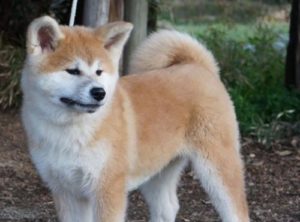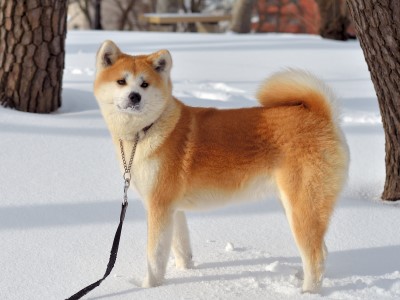
Akita Ken
Akita Ken
The Akita is the only Nihon Ken included in the "large" class. In July 1931, it was designated as a national natural monument. This is a breed well-known not only in Japan, but also overseas, where it became the first Nihon Ken to be readily recognized.
There was a time when the Akita Ken with its roots in the Matagi inu hunting dogs of the Ou Mountain range and Odate region, were bred larger in order to create strong, big, muscular dogs for fighting. As a result, although their physiques increased, dogs that lack Nihon Ken type increased.
Later, in the Showa era, the movement to preserve Japanese dogs began in earnest, and efforts were made to artificially breed back toward pure Akita Ken. Just as these plans began to bear fruit, World War 2 began.
After the war, Americans took Akita Ken back with them and began breeding them in the United States. Perhaps people liked the stately and dignified appearance of the Akita Ken, as the number of puppies born in the United States now far exceeds that of Japan. The breed there has developed, with the appearance changing greatly from that of the Japanese Akita Ken.

Standard Size
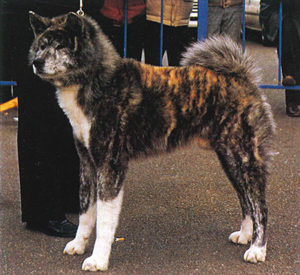 |
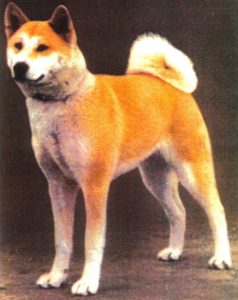 |
|
Male
Height: 67m (64cm to 70cm allowed) |
Female
Height: 61cm (58cm to 64cm allowed) |
*Height: Measured from ground to shoulder

Coat Colors
The majority of Akita Ken in Japan are red, followed by brindle and white.
| Red | Brindle | White |
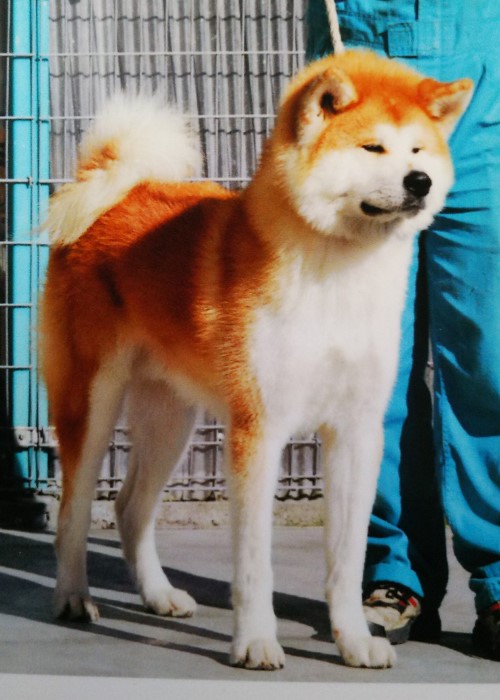 |
 |
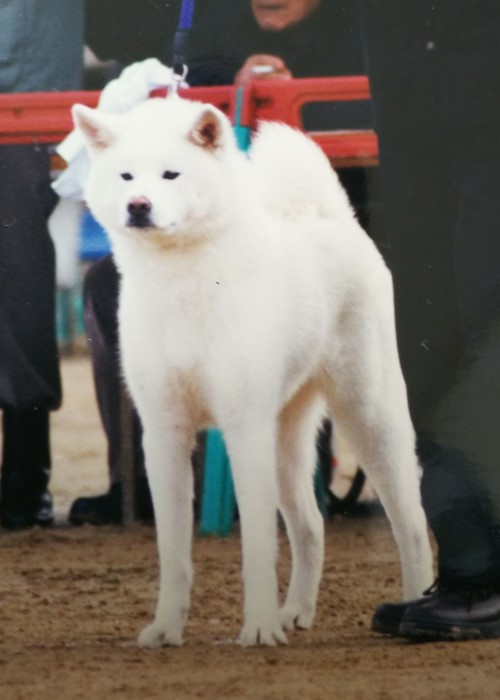 |

Famous Akita Ken
 |
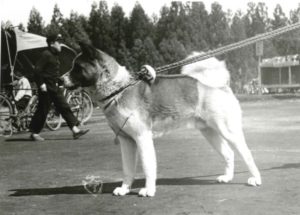 |
| Kongo Go | Goromaru Go |
These are two famous historical representatives of the breed. It was said of Kongo 「金剛系に非ずんば秋田犬に非ず」which is a revision of an old saying that roughly translated can be taken to mean that "if not from the Kongo line, not an Akita Ken''. Kongo dominated exhibitions and took the Akita world by storm. Later, the bloodline was exported to America and became the ancestor of today's American Akita.
After the war, Kongo Go was replaced by Goromaru Go, who came to be known as the "Father of Akita Restoration."

